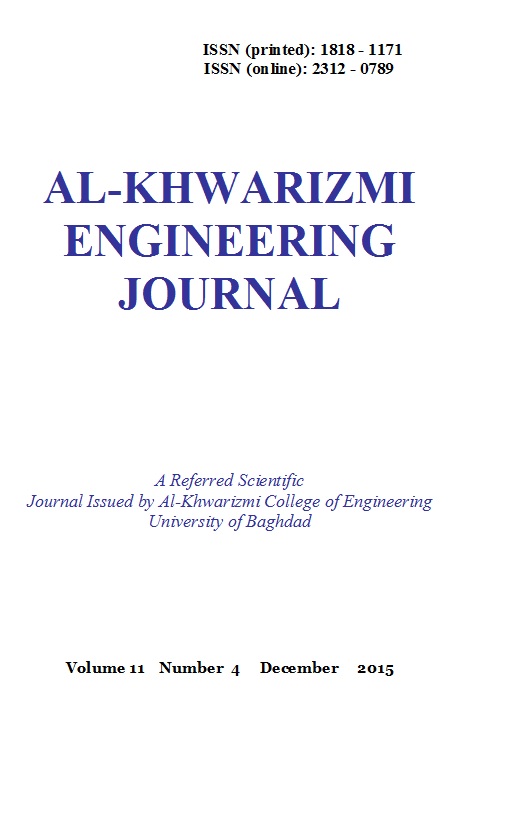الدراسة العملية والعددية لمحاكاة قابلية التشكيل الهيدروليكي لصفائح سبيكة الألمنيوم AA5652
الكلمات المفتاحية:
Keyword : sheet hydroforming , stress and strain distribution, aluminum alloy, forming limit diagram.الملخص
الخلاصة
استخدمت معادن خفيفة الوزن في عملية تشكيل الصفائح وذلك لتصنيع الهياكل المعقدة بهيئة واحدة وبصلابة عالية . عملية تشكيل الصفائح حققت نجاحا وتطورا في مجال الصناعة كما في تصنيع مكونات السيارات .
ان الهدف من هذه الدراسة هو محاكاة النتائج العملية مثل كمية الضغط المطلوب لعملية التشكيل , توزيع الاجهادات والانفعالات مع نتائج برنامج التحليل العددي ( ANSYS11) لصفائح من سبيكة الالمنيوم AA5652 وبسمك (1.2 mm) قبل وبعد المعاملة الحرارية (التخمير) على التوالي في قالب دائري عمقه (20 mm ). مقارنة النتائج العملية مع برنامج المحاكاة كانت متوافقة من حيث تحسين قابلية المعدن على التشكيل وكذلك ازدياد المنطقة اللدنة للمعدن بعد عملية التخمير .
التنزيلات
التنزيلات
منشور
إصدار
القسم
الرخصة
حقوق الطبع والنشر: يحتفظ مؤلفو الوصول المفتوح بحقوق الطبع والنشر لاعمالهم، ويتم توزيع جميع مقالات الوصول المفتوح بموجب شروط ترخيص Creative Commons Attribution License، والتي تسمح بالاستخدام غير المقيد والتوزيع والاستنساخ في أي وسيط، بشرط ذكر العمل الأصلي بشكل صحيح. إن استخدام الأسماء الوصفیة العامة، والأسماء التجاریة، والعلامات التجاریة، وما إلی ذلك في ھذا المنشور، حتی وإن لم یتم تحدیدھ بشکل محدد، لا یعني أن ھذه الأسماء غیر محمیة بموجب القوانین واللوائح ذات الصلة. في حين يعتقد أن المشورة والمعلومات في هذه المجلة صحيحة ودقيقة في تاريخ صحتها، لا يمكن للمؤلفين والمحررين ولا الناشر قبول أي مسؤولية قانونية عن أي أخطاء أو سهو قد يتم. لا يقدم الناشر أي ضمان، صريح أو ضمني، فيما يتعلق بالمواد الواردة في هذه الوثيقة.











